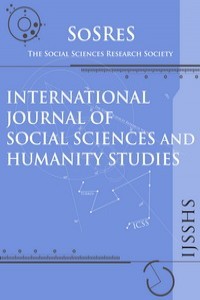SHE LOOKS LIKE US: REPRESENTATION OF IDEALIZED ETHNIC BEAUTY IN MAGAZINE’S IMAGES, LOCAL ADVERTISEMENT FOR MIGRANTS
SHE LOOKS LIKE US: REPRESENTATION OF IDEALIZED ETHNIC BEAUTY IN MAGAZINE’S IMAGES, LOCAL ADVERTISEMENT FOR MIGRANTS
Image, Beauty, Representation Migration, Identity,
___
- Andréia Ferreira, (Translated by André Soares) The Multiple Identities of the Nikkei Community The Brazilian Media Landscape in Japan , http://www.discovernikkei.org/en/journal/2008/10/8/multiplas-identidades/ (Accessed 15.5 2010)
- Azevedo, Fernando de (1943), Brazilian Culture, translated by William Rex Crawford, New York : Macmillan company
- Friedan, Betty (1963), The feminine Mystique, New York:W. W. Norton & Company
- Hall, Stuart (1973), Encoding and Decoding in the Television Discourse, Univ.B'ham.,Centre for Contemp.Cult.Studs.
- (1997), Representation: Cultural Representations and Signifying Practices, London:Sage
- Publications & Open University Lowenstein, Karl (1942), Brazil under Vargas. New York: Macmillan
- McLuhan, Marshall (1964), Understanding Media: The Extensions of Man, New York:McGraw- Hill Book Company
- McLuhan, Marshall & Fiore, Quentin (1967), The medium is the massage: An Inventory of Effects, New York: Bantam.
- Said, E.W. (1978), Orientalism, New York:Georges Borchardt Inc.
- Başlangıç: 2009
- Yayıncı: Sosyal Bilimler Araştırmaları Derneği
DEMOGRAPHIC CHANGES AND PRINCIPLES OF THE FAIR DIVISION
Janusz ŁYKO, Katarzyna Cegiełka, Piotr Dniestrzański, Andrzej Misztal
CONCEPTIONS OF THE EU AND ATTITUDES TO TURKEY'S ACCESSION IN FRENCH AND BRITISH DISCOURSE
CHALLENGES AND OPPORTUNITIES THE INSURANCE INDUSTRY FACING WITH IN RELATION TO CLIMATE CHANGE
Fekete Mária FARKASNÉ, Anna LÓRÁNT
THE SYSTEM OF ENVIRONMENTAL DAMAGES AND THEIR ECONOMIC EFFECT ASSESSED BY WAY OF MATRIX STRUCTURE
Zsuzsanna Mohamed, İstván SZŰCS, Szabolcs TAKÁCS, Márk MOLNÁR
SOCIAL CAPITAL AND CIVIC PARTICIPATION
A LITERATURE SURVEY ON ENVIRONMENT - POVERTY NEXUS
Necmiye Comertler, Funda Condur
ADOLESCENT IMMIGRANTS’ HOST SATISFACTION IN A RECENT IMMIGRATION RECEIVING COUNTRY
Elena Briones, Juan Cosano, M. Carmen Tabernero
MACEDONIA IN EUROPE: AN UPDATE OF THE SEARCH FOR A RIGHTFUL PLACE
GENDER AND POVERTY: SOCIO-PSYCHOLOGICAL ANALYSIS OF FEMALE ROLE MODELS AND VULNERABILITY PROFILES
Antonella Rissotto, Angelita Castellani, Loris Di Giammaria
THE ANALYSIS OF CHILD PROTECTION SERVICES FROM A SYSTEMS PERSPECTIVE
